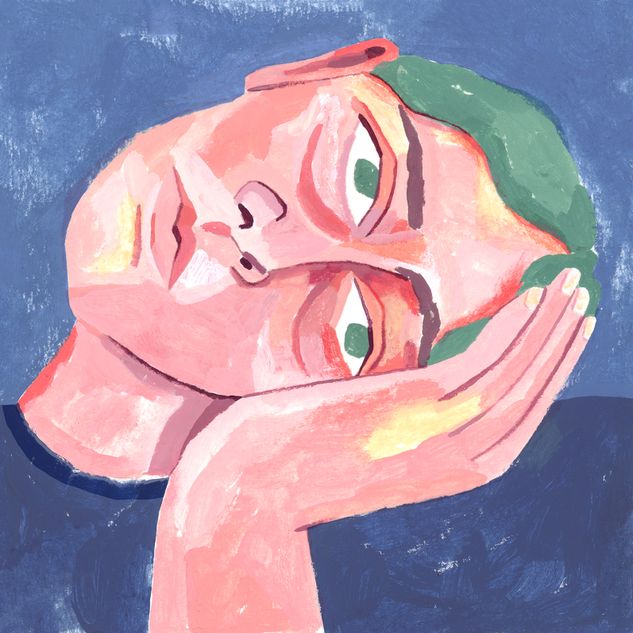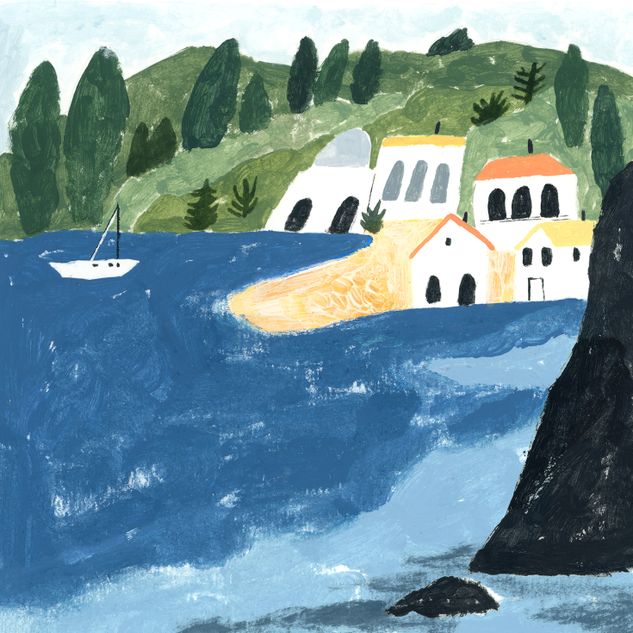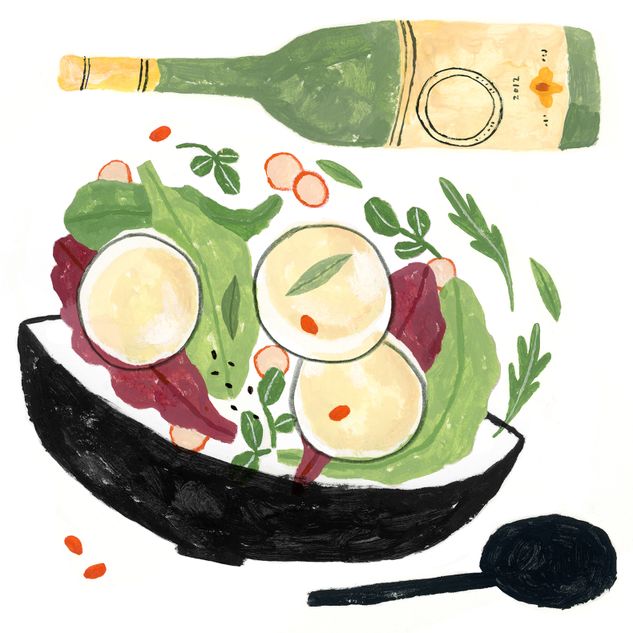Esther Daniels, 65, twice divorced, childless, still beautiful in an English kind of way, makes a living from her art.
Her studio is a shed in her garden. It has one window, facing north. It’s not what people imagine an artist’s studio should be: a temple to light, with great squares of sky visible through an architect’s brutally clever arrangement of glass. When the wind is strong, Esther suspects that her shed actually moves on its shallow concrete foundations, but she doesn’t want to admit beyond all certainty that it does move. She would find this knowledge just too troubling. The badly built shed houses her great endeavour, without which her life would feel pointless.
Flowers are Esther’s passion. She knows there are passions more significant than this, but she doesn’t care. She’s kept sane by her repeated attempts to sanctify common flowers in their living state, in all their fleeting glory, through the medium of oil paintings. It’s her belief that her works, even when given the little patina of abstraction she likes to grace them with (the human mind endowing her darling dahlias, roses and oxeye daisies with a quota of fashionable alteration) are not considered serious art. Philip, her agent who handles clients earning millions, never seems to hold this against her. She believes Philip has understood that many people—the kind of people that politicians like to describe as “ordinary” or “hard working”—don’t want serious art; they want decorative things, things of human size, objects of hope or fond memory. So there she is, 65, twice divorced, living alone and making a living from painting flowers.
Here’s a glimpse of her.
She is what her mother described as “big boned,” a description she has always found slightly shaming. Her hands are wide and strong. She wears calf-length wool-mixture skirts in winter and heavy, brightly patterned cardigans, bought from a catalogue which claims that they emanate from Peru. Above the Peruvian cardigans, her hair is thick and wiry, wolf-grey. Her nose is straight and fierce.
Now, here’s a quick sketch of Skeet Mills.
Skeet is no longer a boy, but seems condemned to look younger than his 22 years. He dyes his hair green. He has a tattoo of a cutlass on his neck, deliberately near the jugular vein, and a cascade of silver rings in his left ear. He’s a little short-sighted and the cheap off-the-peg glasses he wears to do his work exhaust his eyes.
But what eyes! He matched his hair colour to them, a vibrant sage. Long dark lashes protect and enhance them. A lover once said of these lashes, “you could use them to sweep up after yourself, Skeet.”
And it’s true that there is a lot of sweeping up that could be done in Skeet’s small flat, which consists of three rooms above a dimly lit shop selling second-hand guitars and ukuleles in a middling kind of small country town. But Skeet is consoled by mess. He stubbornly believes that from his own tiny world—disordered, with broken objects allowed to exist by the side of whole ones, where dust and strands of green hair, cigarette ash and dry fragments of clay have become part of the floor’s essential substance, where his phone still trembles and calls to him through a splintered casing—from this random amalgamation of stuff is born the thing he offers the world: his art.
Skeet Mills went to art school once. It feels like long ago. And what he remembers most vividly about his time there is the feeling of not-learning merging into the bitter apprehension that he was -un-learning everything he’d known before he’d enrolled. He’d thought his drawing was good, but no life classes were offered. Skill at drawing didn’t seem to be a thing that was valued by his tutors. They intimated that only -amateurs -actually attempted “old-fashioned realisation of actual objects or bodies.” Serious artists had long ago (“ever since Picasso stopped fiddling about in blue and pink, Skeet, and saw the world afresh through -Cubism”) moved into “the realm of the conceptual.”
Skeet had no real concept of what “the conceptual” actually was. He couldn’t get beyond the word to anything he considered to be realisable. He became agitated and restless. His fellow students nicknamed him “The Mosquito” because he was never still or contained, but always whining, always out of reach and sometimes literally biting things—his clothes or his sketchbooks—so great was his anguish. Yet they didn’t exactly dislike him. His sage-green eyes could often seduce them. Out of affection for him, the name Mosquito became “Skeet.”
Skeet works on in his cluttered little space. He sells enough charcoal drawings and small clay sculptures of the female human form to a local gallery to keep a log-burning stove going through the winter. He’s taught himself to make dahl and fresh hummus and lives more or less on these and packets of brown rice. But he’s as thin as a homeless dog. And he’s ferociously tired of being poor. He longs to see some other bit of the world: a place where wild thyme might grow on a hot hillside. He begins to wonder if he shouldn’t petition for a part-time job in the ukulele shop. Music, he thinks, can only be what it actually is, not an abstraction of itself. But then, late one night, snatching off his spectacles from his smarting eyes, he hears himself say out loud to no one and nothing but the stuff surging against his cold, naked feet: “Fuck it. I need a concept.”

They collide here, in this bit of 21st-century time, the lives of Esther Daniels, 65, and Skeet Mills, 22, and after this collision nothing will be quite the same.
It happens like this.
Esther has unsold work from a show in Bristol taking up too much space in her shed and has begun to wonder if the small gallery in the middling kind of town might be persuaded to take three or four of her flower pictures at a marked-down price. She has hardly ever been inside the place, yet notices that it is still there, housed between a charity shop and a newsagents in a pedestrianised street, where in fact very few pedestrians pass. And she admires the outfit for its perseverance. (As she ages, Esther is more and more inclined to love those things—and people—from whom the world appears to have turned away.)
Now, on a late April afternoon, Esther is standing outside the gallery, hesitating. In the gallery window, one work is displayed. It’s a nicely framed canvas, painted entirely black. Into the centre of the black canvas, a price has been incised with clean precision: £4,500. Esther stares. The work has been hung on a bright white panel, allowing light to glow through the cut-out digits. A hand-inked card underneath it names the piece The Price of Art (I). And Esther smiles. She feels that straight away she understands the rationale behind the concept: the art world is driven by monetary value so why bother with any actual painting? Go straight to the price, without all the ardour and mess of creation. Make a “picture” of that. Sell that. Capture the ethos of the 2020s in a metric.
Esther goes into the gallery. A bell tinkling above the door brings forth a dishevelled man in a tweed jacket too short for his arms.
“What can I do?” he asks.
Into Esther’s mind floats for a second her original intention of coming here to see if the gallery might take some of her unsold flower paintings, but she sets this aside to say, “I was intrigued by the piece in your window. Who is the artist?”
“Oh,” says Tweed Jacket, “I thought it rather clever. What do you think?”
“Well,” says Esther, “I believe I’ve grasped its intention.”
She looks round the gallery, flaring here and there with pinpricks of light above old-fashioned muddy scenes of English rural life, peopled only with lumps of farm machinery and seagulls, like tatters of airborne garbage, following the harrow. She wonders if the piece in the window is unique of its kind.
“It’s unique of its kind,” says Tweed Jacket, apparently reading Esther’s mind. “The artist’s name is Skeet Mills. He’s just starting out. I said to him, don’t make any more of these yet. But I think it’s droll. I’ll give this a bit of window dressing and let’s see if it sells. Then you could try a couple more. Different values, of course. Meanwhile, keep the scalpel sharp.”
Esther goes back into the street and looks at The Price of Art (I) a second time. Tweed hovers by the door, smiling some faraway smile. Esther turns to him and says she will buy the piece. The price is not £4,500 but £380, so Esther calculates that, once the gallery has bitten off its 50 per cent commission, Skeet Mills will make something less than £200. Groceries for two or three weeks? Some new trainers? A trip to London? “Don’t smile,” she wants to say to Tweed Jacket, “because poverty in this country, in this ugly century, is not a laughing matter.”
Tweed now looks happy that he’s made an unlikely sale, but explains that he doesn’t want to remove the “product” from the window. As they walk back into the gallery he says that he wants to “test its waters” to see if other people are -interested.
“Probably a rational decision,” says Esther.
“Thank you,” says Tweed, advancing towards a shelf where he keeps a credit card machine.
“In two weeks’ time,” he continues, “I’ll deliver it personally to your house, if you note down your address. But I have to take payment now. Is that all right?”
“Yes,” says Esther. “It’s perfectly all right.”
She fumbles in her capacious handbag for her card, but when she hands it over, fails to notice that Tweed Jacket’s countenance lights up from within.

Skeet is lying on a daybed at dusk when his doorbell buzzes.
He wonders if it might be a girl he met in the pub some nights ago, a young woman drinking on her own who dared to ask Skeet, with a throaty laugh, if he was wearing mascara.
It’s not her. It’s Tweed Jacket, whom Skeet knows as Troy. Skeet presses the door release button and hears Troy (who habitually moves in an injured kind of way, like a hospitalised patient) come bounding up the narrow stairs with surprising alacrity.
“You’ll never guess...” Troy gasps, even before he’s found an inch of space in Skeet’s room on which to perch, “who’s bought your Price of Art doo-da?”
“No,” says Skeet without moving his tired limbs from the couch, “I’ll never guess.”
“Esther Daniels,” says Troy.
“What?” says Skeet, hauling himself into a sitting position.
“Esther Daniels.”
“The Esther Daniels? The fucking big-name sculptor?”
“Yes. I’m delivering it to her house in a fortnight’s time?”
“What, she lives near here?”
“Yes. I guess she does. She said she was really struck by your concept.”
“Well, fuck me,” says Skeet. “This is important, isn’t it?”
“I think it is,” says Troy. “I think we can cultivate something out of this. Can’t we? She’s an Influencer. So, well done. Buy you a vodka at the pub?”

The fortnight passes.
Esther is in her shed, working on a small painting of primroses. The wind is blustery and that all-too-familiar sensation of the shed moving is urgent enough for Esther to lay down her brushes for a moment to stare out of the window, to see if there is some almost imperceptible swaying of the structure. She really can’t tell. Her mind drifts towards an uncomfortable fact: how few human hours are located inside any consoling arena of certainty. And, as you age, that arena becomes smaller and smaller so that almost everything you undertake feels infected with imminent collapse.
Esther draws her Peruvian cardigan more tightly round her body. As she does so, she hears her name called. She goes to the half open shed door and sees two men walking up the concrete path towards her. She recognises one of them as Tweed Jacket from the gallery, slouching along in his infirm way, and with him is a young man with green hair whose face, at the sight of her, creases itself into an enraptured smile. He carries a large package, wrapped in brown paper. And, seeming not to help himself, he breaks into a run, arriving swiftly at her side as she steps out of the shed and closes the door behind her.
“Totally humbled, Miss Daniels…” he stammers. “I know this is probably an intrusion, but I just wanted to savour the moment—of putting my work into your hands.”
“Oh,” says Esther, “well, I’m flattered. Very. You must be Skeet Mills.”
“Yes,” says Skeet, “and can I just say—though I realise I’m being fucking creepy—that this is a mega-important moment in my life. You buying a bit of my stuff has just… lifted me up. So here you are. Can I be even more creepy and say I give it to you with all my love?”
Esther takes the package. The wind is blowing Skeet’s green hair into a kind of funnel towards the back of his head. He seems unbothered by this. A vein in his neck, beneath the cutlass tattoo, pulses with fevered exaltation. She smiles at him, but now the first stirrings of an uneasy suspicion enter her mind. She sees Troy looking worriedly about him, at the neat garden, at the plain little house, and then at the plank walls and tiny window of the shed. His expression is one of extreme perplexity.
“So,” Troy says, “this can’t be where you do your… uh… monumental work, Miss Daniels?”
“Oh,” she says, knowing now that she’s unable to avoid her own imminent devaluation in the eyes of these two people, “yes it is. In the shed.”
“Ah,” says Troy, glancing with something like agony at Skeet. “Perhaps it’s bigger than it looks.”
“No,” says Esther. “I think it’s even smaller than it looks.”
Now, she sees, Skeet has gone pale. Poor Skeet, with his beautiful eyes and his body of a starving pup.
She opens the door of the shed and ushers him in. On her easel she points to the half-completed painting of primroses. He stares at it, then puts his hands over his ears, as if the pretty little painting were making an unbearable noise.
“Fuck,” he whispers. “Oh fuck.”
Later, Skeet and Troy sit in the pub sunk in abject misery.
“Why did you tell me this was Esther Daniels?” asked Skeet.
“Because her name was on her credit card. How was I to know she wasn’t the Esther Daniels?”












